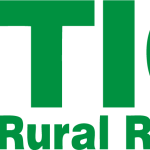
You could really notice the spring growth of winter annual weeds in some fields this past week. A winter annual weed is an unwanted plant in your field that germinated last fall, overwintered, resumed growth this spring, and will some begin flowering and producing seed this spring. There are numerous species of winter annuals weeds common in row-crop production in the region. Henbit, marestail, field pennycress, shepherd’s purse, and tansy mustard, just to name a few.
Winter annuals weeds can negatively influence the growth and yield of your corn, soybean or other cash crop. Potential reasons for this negative influence have included the following: Utilizing soil moisture and nitrogen, host for soybean cyst nematodes, compete for light, increased cutworm pressure, and allelopathy. However, in some cases, winter annual weeds can provide similar benefits as a winter cover crop to help protect against soil erosion, provide carbon back to the soil, and utilize excess spring soil nitrogen that may have been lost due to leaching.
Local research has shown that delaying the control of winter annuals weeds in the spring can lead to significant yield decreases in both corn and soybean. A 2007-2009 UNL study conducted in Lincoln and Clay Center found that in 5 of the 6 site-years (2 site per year for 3 years is 6 site-year) that not controlling winter annual weeds prior to corn and soybean planting resulted in greater than a 5% yield loss and a 10% loss in 4 of the 6 site years. My 2010-2011 research in eastern Kansas determined across 14 site-years and N fertilizer rates that delaying weed control until near the time of corn planting reduced corn plant populations by 526 plants per acre, early corn nitrogen uptake by 24%, corn ear leaf chlorophyll meter readings at silking by 3.4%, and grain yield by 7.6 bushels per acre, compared to the earliest herbicide application in March or November. You can avoid reductions in nitrogen supply and increase corn yields by controlling winter annual weeds as early as possible before planting, including herbicide applications last fall. On fields with heavy pressure of winter annual weeds, delaying herbicide applications until April and May could result in an additional 15 to 30 pounds N per acre being needed to achieve similar yields to those obtained when weeds were controlled earlier. If you get in a pinch due to adverse weather conditions and do not control winter annual weeds until planting, some extra N could be applied as starter or side-dressed later to compensate. However, yield limitations from factors other than nitrogen were associated with delayed herbicide applications in my research too.
So it is best to target no-till fields with heavy winter annual weed pressure now (early April) with pre-plant herbicide applications to decrease the probability of reduced corn and soybean yields in 2020. Know your crop, know you tech, know your bottom line.
Additional articles and extension resources
- CropWatch: How Temperature and Rain Can Affect Burndown Herbicides
- CropWatch: Burndown and Pre-emergence Herbicides for Weed Control in Corn and Soybean
- Iowa State University, March 20: Managing Winter Annual Weeds this Spring
- Nebraska Extension Circular EC304: Identification of Winter Annual Seeds
- Nebraska Extension 2020 Guide to Weed Management


